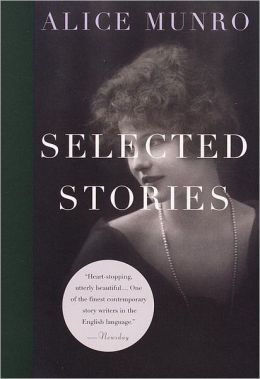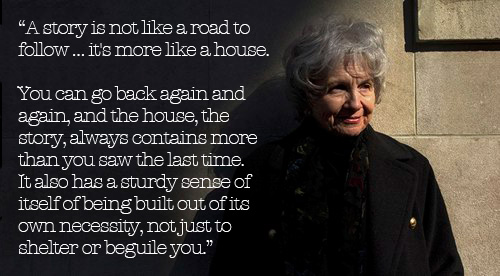“A story … has a sturdy sense of itself of being built out of its own necessity, not just to shelter or beguile you.”
 The question of what makes a great story has occupied the minds of some of our most celebrated storytellers. Kurt Vonnegut hadhis eight tips and Barnaby Conrad his six, Ken Burns devised a formula, and John Steinbeck defied the very notion of such formulas. A good story, nonetheless, is hardly a relative notion: To use one of pop culture's most tired yet most expressive similes, it's like pornography – you know it when you read it. But what, then, makes a story great?
The question of what makes a great story has occupied the minds of some of our most celebrated storytellers. Kurt Vonnegut hadhis eight tips and Barnaby Conrad his six, Ken Burns devised a formula, and John Steinbeck defied the very notion of such formulas. A good story, nonetheless, is hardly a relative notion: To use one of pop culture's most tired yet most expressive similes, it's like pornography – you know it when you read it. But what, then, makes a story great?
In the introduction to her 1996 anthologySelected Stories (public library), 2013 Nobel Prize in Literature laureate Alice Munro (b. 1931) adds to the collected wisdom of great writers and builds a beautiful metaphor for “the hermeneutical path taken up in the reading process”:
A story is not like a road to follow … it's more like a house. You go inside and stay there for a while, wandering back and forth and settling where you like and discovering how the room and corridors relate to each other, how the world outside is altered by being viewed from these windows. And you, the visitor, the reader, are altered as well by being in this enclosed space, whether it is ample and easy or full of crooked turns, or sparsely or opulently furnished. You can go back again and again, and the house, the story, always contains more than you saw the last time. It also has a sturdy sense of itself of being built out of its own necessity, not just to shelter or beguile you.
In a 1994 Paris Review interview, she offers a curious counterpoint to the notion that the reading experience of a story is ever-evolving, by observing that so is its writing experience. Both challenging and affirming the notion of a story's “sturdy sense of itself,” Munro notes that whenever she begins writing a story, she doesn't fully know what it will be or where it will go – which is exactly as it should be:
Any story that’s going to be any good is usually going to change.
And that, perhaps, is the gift of great literature: The invitation to continually discover and rediscover ourselves, both as readers and as writers, in the perpetually evolving experience of a good story.
Complement with Kurt Vonnegut on the shapes of stories, and see these shapes spring to life in Munro's Selected Stories and Hateship, Friendship, Courtship, Loveship, Marriage: Stories.
For more notable wisdom on the written word, see Elmore Leonard's10 rules of writing, Walter Benjamin's thirteen doctrines, H. P. Lovecraft's advice to aspiring writers, F. Scott Fitzgerald's letter to his daughter, Zadie Smith's 10 rules of writing, David Ogilvy's 10 no-bullshit tips, Henry Miller's 11 commandments, Jack Kerouac's 30 beliefs and techniques, John Steinbeck's 6 pointers, and Susan Sontag's synthesized learnings.

No comments:
Post a Comment